Welcome to a world where the wonders of nature are just a pot away! Whether you’re a seasoned green thumb or a budding plant enthusiast, “Stunning Container Garden Ideas for Apartments” is your ticket to transforming even the smallest spaces into lush, vibrant retreats. Apartment living doesn’t have to mean sacrificing the joys of gardening; in fact, it’s an opportunity to get creative and experiment with a plethora of stunning plant combinations. This guide is bursting with innovative ideas that promise not only to beautify your surroundings but also to uplift your spirit.
Within these pages, you’ll discover the magic of container gardening, where practicality meets artistry. Our curated selection of designs is not only visually captivating but also incredibly easy to implement, ensuring that your gardening journey is both rewarding and enjoyable. From selecting the right containers to choosing plants that thrive in limited spaces, we’ve got you covered with tips that bring out the best in your green oasis. With each technique and idea, you’ll gain the confidence to cultivate a personal sanctuary that reflects your style and nurtures your well-being.
Choose Space-Saving Vertical Planters
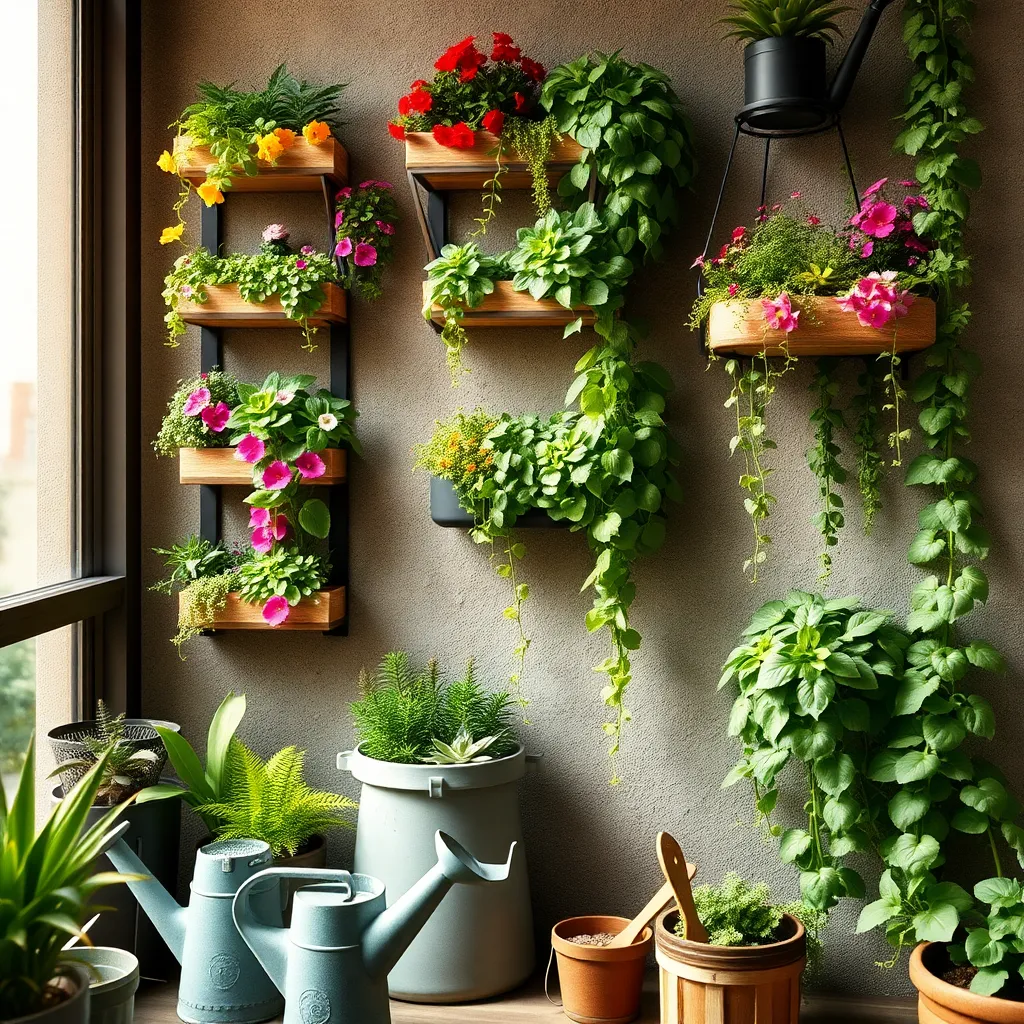
Vertical planters are an excellent solution for maximizing space in small apartments, allowing you to grow a variety of plants without a sprawling footprint. Consider options like wall-mounted planters or tiered shelves, which can transform a plain wall into a lush garden.
When selecting plants for your vertical garden, choose those with shallow root systems such as herbs, succulents, or small leafy greens. Herbs like basil, mint, and thyme thrive in vertical planters and require minimal maintenance, making them perfect for beginners.
Ensure your vertical planters have adequate drainage to prevent waterlogging, which can lead to root rot. Use a well-draining potting mix and water your plants only when the top inch of soil feels dry to the touch.
For experienced gardeners looking to add a touch of creativity, consider incorporating a mix of trailing and upright plants for visual interest. Trailing plants like pothos or ivy can cascade beautifully down the sides, while upright plants such as ferns or snake plants add structure.
Select Lightweight Potting Containers
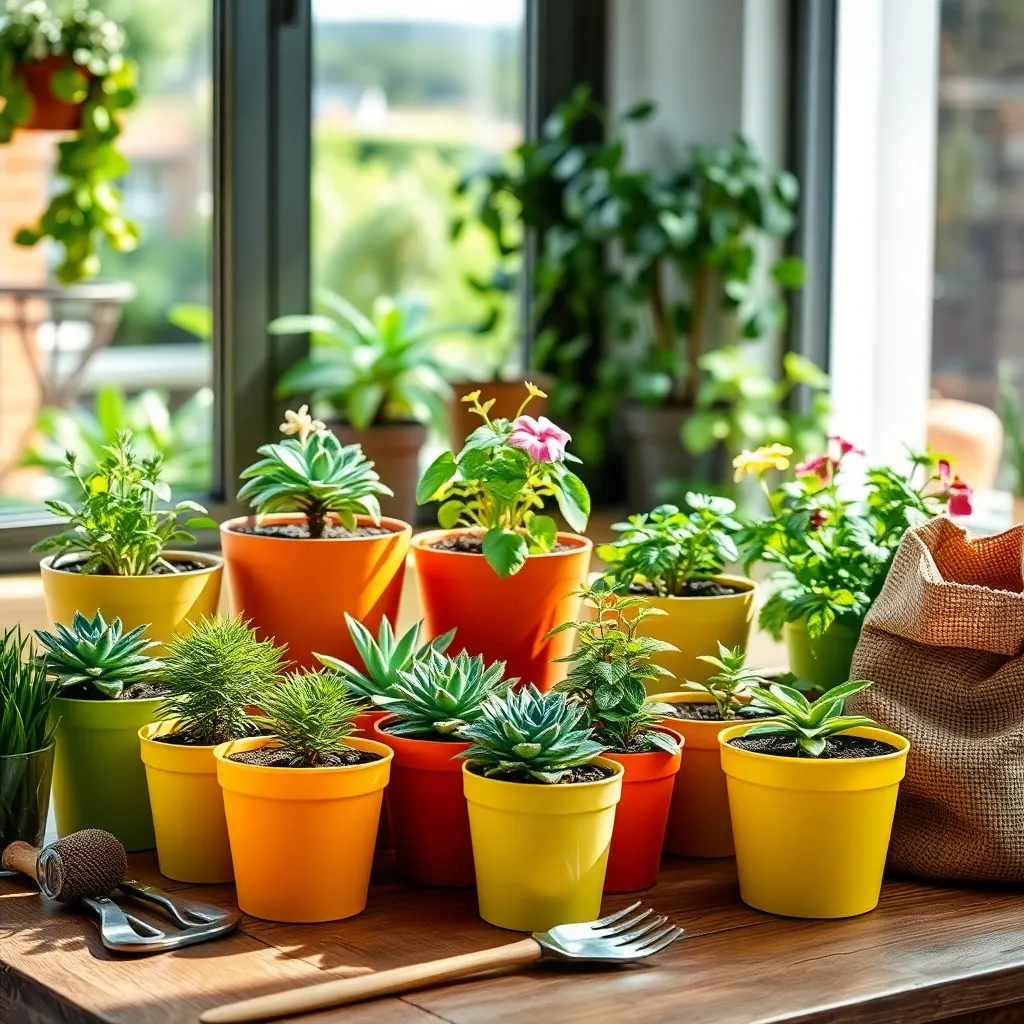
Choosing the right potting containers is essential for creating a thriving container garden in your apartment. Lightweight containers are particularly beneficial as they are easy to move, allowing you to optimize light exposure for your plants throughout the year.
Consider materials like plastic, fiberglass, or fabric for your container choices, as these are typically lighter than traditional ceramic or terracotta pots. Plastic pots retain moisture well, which can reduce the frequency of watering, especially in warmer climates or sunny spots.
Ensure your containers have drainage holes to prevent waterlogged soil, which can lead to root rot. For added convenience, place saucers or trays beneath the pots to catch excess water and protect your apartment floors.
For those looking to grow larger plants, consider using lightweight alternatives such as fabric or self-watering pots that offer ample space and excellent aeration. These pots are designed to promote healthy root growth while minimizing the risk of overwatering.
Incorporate Multi-Level Plant Stands
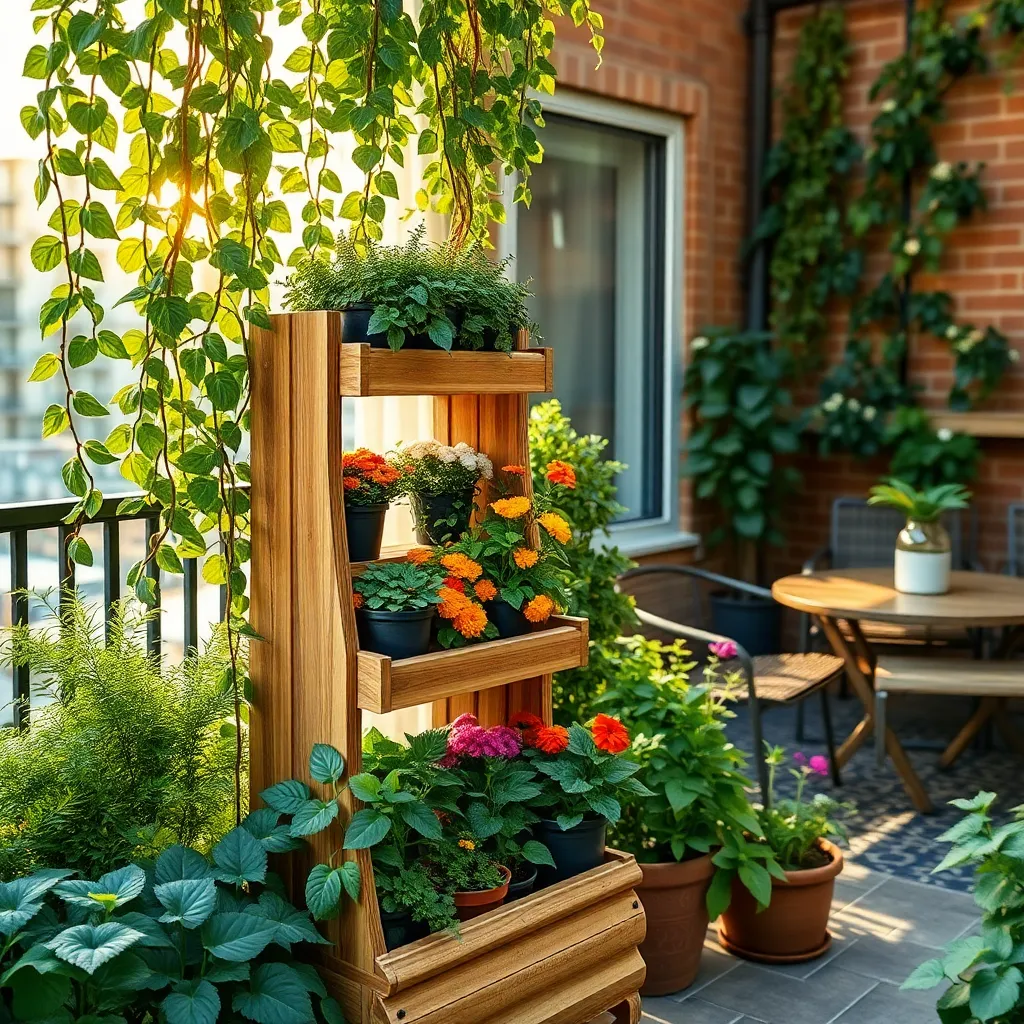
Multi-level plant stands are an excellent way to maximize space in your apartment garden while adding visual interest. They allow you to showcase a variety of plants at different heights, making it easier to create a lush, layered look without taking up valuable floor space.
When selecting a plant stand, opt for one that is sturdy and made from weather-resistant materials like metal or treated wood. This ensures durability and helps your stand withstand humidity and occasional water spills, important factors for maintaining your indoor garden.
For beginners, start by placing sun-loving plants like succulents or herbs on the top tier where they can soak up the most light. Consider using the lower levels for shade-tolerant plants such as ferns or snake plants, which thrive with less direct sunlight.
Advanced gardeners might experiment with plant stands that incorporate built-in lighting for areas with limited natural light. Grow lights can be installed on each tier, providing the necessary spectrum to support healthy plant growth even in dimly lit apartments.
Opt for Self-Watering Systems
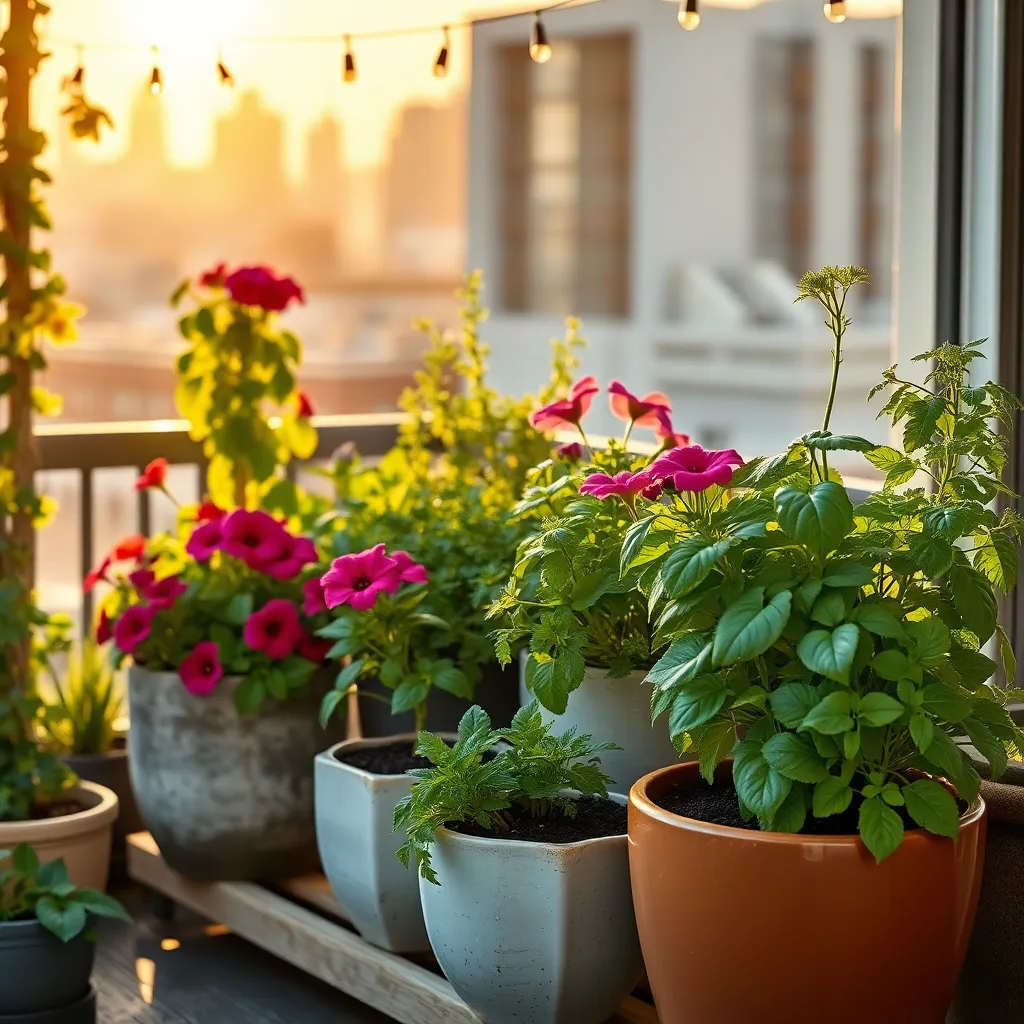
For apartment dwellers, self-watering systems are a game-changer, allowing you to maintain vibrant container gardens with minimal effort. These systems use reservoirs that provide a consistent supply of water, reducing the need for daily watering and ensuring plants receive the moisture they need.
To maximize effectiveness, select a self-watering container that suits the size of your plant. Ensure the container has a visible water gauge so you can easily monitor water levels and refill as necessary, which is particularly useful for busy individuals.
For beginners, start with easy-to-care-for plants like pothos or spider plants, which thrive in self-watering environments. These plants are forgiving if you forget to top up the water reservoir occasionally, making them perfect for honing your gardening skills.
Experienced gardeners can experiment with herbs such as basil or mint, which benefit significantly from consistent moisture provided by self-watering systems. Use a high-quality potting mix that promotes good drainage while retaining enough moisture for your herbs to flourish.
Utilize Herbs for Functional Decor
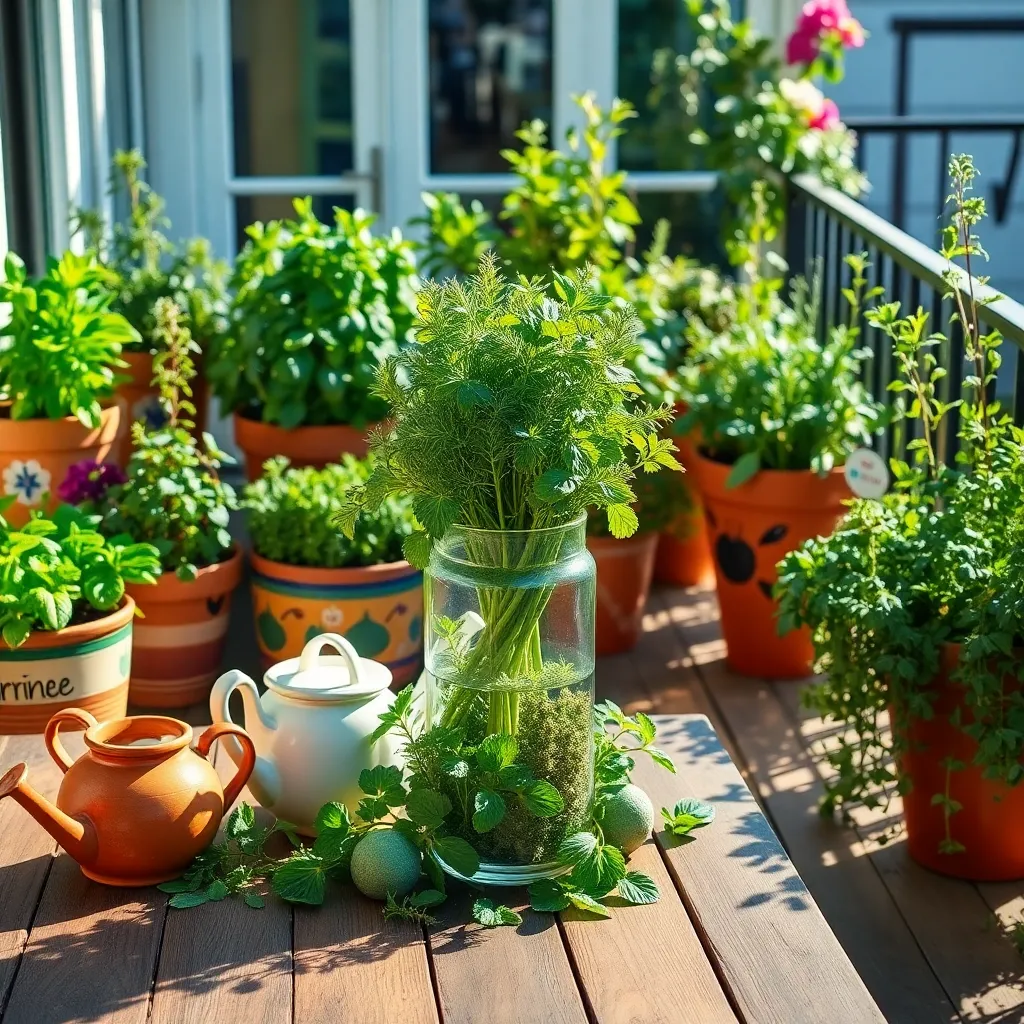
Herbs offer a dual purpose in your apartment by serving as both functional decor and a fresh ingredient for your meals. Incorporating herbs like basil, thyme, and mint into your container garden can enhance your living space with their lush greenery and delightful scents.
To ensure healthy growth, place your herb containers in a spot that receives at least six hours of sunlight daily. South-facing windowsills are ideal, but if natural light is limited, consider using grow lights to supplement their needs.
Proper soil is crucial for herb success, and a well-draining potting mix is your best bet. Mixing in perlite or coarse sand can improve drainage and prevent root rot, which is essential for thriving plants.
Watering is another key aspect of herb care, with most herbs preferring to dry out a bit between waterings. To test soil moisture, insert your finger about an inch deep; if it feels dry, it’s time to water.
For those seeking a more advanced approach, try companion planting by pairing herbs with similar water and light needs. For example, basil and parsley thrive together, while rosemary and sage prefer drier conditions.
Conclusion: Growing Success with These Plants
In conclusion, the ‘Stunning Container Garden Ideas for Apartments’ article beautifully intertwines the art of gardening with nurturing relationships. It highlights five key concepts: the importance of cultivating patience, the power of communication through shared activities, the joy of watching something grow together, the need for adaptability in changing spaces, and the profound impact of creating a sanctuary for connection. These insights reveal how container gardening can serve as a metaphor and practice for strengthening bonds in cozy apartment settings.
To take immediate action, consider starting a small container garden project with your partner or loved ones today. Select plants that symbolize your relationship or ones that require teamwork, and let this shared endeavor blossom into deeper understanding and appreciation for one another.
Remember to bookmark this article as a resourceful guide on your journey toward enriching your relationships. As you grow your urban garden, envision the flourishing success of your connections, where each leaf and bloom reflects the love and effort you invest. Embrace this opportunity to nurture both your green thumb and your heart, setting the stage for vibrant and lasting relationships.
